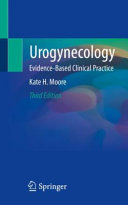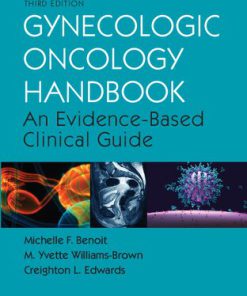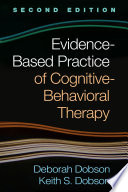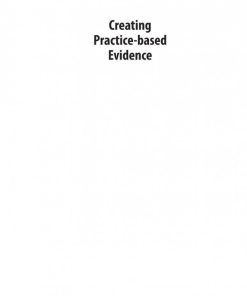Urogynecology Evidence Based Clinical Practice Third Edition by Kate H Moore 9781447142911 1447142918
$50.00 Original price was: $50.00.$25.00Current price is: $25.00.
Urogynecology Evidence Based Clinical Practice Third Edition Kate H Moore – Ebook PDF Instant Download/Delivery, ISBN: 9781447142911, 1447142918

Product details:
- ISBN 10: 1447142918
- ISBN 13:9781447142911
- Author: Kate H Moore
Urogynecology: Evidence-Based Clinical Practice
Table contents:
Contents
Chapter 1: Taking the History
History Taking for Incontinent Women
Incontinence Symptoms
Nonincontinent Symptoms of Storage Disorders: Frequency, Urgency, and Nocturia
The Frequency–Volume Chart (FVC)
Other Types of Leakage
How Bad Is the Problem?
History Taking for Voiding Difficulty
History Taking for Prolapse
History Taking for Fecal Incontinence
Symptoms of Obstructive Defecation
Assessing Previous Surgical History in Relation to Urinary Incontinence
History Taking for Dyspareunia
History Taking for Recurrent Bacterial Cystitis
History Taking for Painful Bladder Syndrome/Interstitial Cystitis (IC)
History of Drug Therapy That May Facilitate Urinary Incontinence
General Assessment of the Patient in Relation to Urogynecology
Chapter 2: Physical Examination
Examine the Abdomen
Inspect the Vulva
Elicit a “Stress Leak”
Speculum Examination
Pass a Bivalve Speculum
Pass a Sims Speculum
POPQ Scoring System of Prolapse
Perform a Bimanual Examination
Assess the Pelvic Floor Muscle Contraction Strength: Oxford Score
Do All Urogynecology Patients Need a Rectal Examination?
Screening Neurological Examination
References
Chapter 3: How to Manage the Patient After History and Examination
First, Treat Precipitating Factors
Second, Obtain All Relevant Old Notes
Third, Begin a Basic Management Program for Urinary Incontinence
Fourth, if Anal Incontinence Is Present
Fifth, if Prolapse Symptoms Are Present
If Associated Recurrent Bacterial Cystitis (Urinary Tract Infection, UTI) Is Present
If Suprapubic Pain, with Severe Frequency, Urgency, and Nocturia, Is Present
A Few Words About Explaining the Situation to the Patient
Urinary Incontinence
Anal Incontinence
Prolapse
Chapter 4: How to Conduct Urodynamic Studies: Essentials of a Good Urodynamic Report
Who Needs Urodynamic Testing?
Different Forms of Urodynamic Studies
Practical Advice About How to Perform Urodynamic Studies
Calibration of the Equipment
General Clinical Guidelines
Explaining the Test to the Patient
Uroflowmetry
Performance of Cystometry
Passing the Rectal Catheter
Twin Channel Cystometry
Urodynamic Diagnoses Available from the Filling Phase
What Is Sensory Urgency, Now Termed Bladder Oversensitivity?
Features of the Atonic Bladder During the Filling Phase
Videourodynamics
Videourodynamic Testing
Value of VCU in Cystocele
“Occult” Stress Incontinence
Ultrasound
Voiding Cystometry
Diagnoses Made After Voiding Cystometry
Outflow Obstruction
Atonic Bladder
Detrusor Hyperactivity with Impaired Contractility (DHIC)
Detrusor Sphincter Dyssynergia (DSD)
Special Urodynamic Tests
Urethral Pressure Profilometry
Abdominal or Valsalva Leak Point Pressure Test
Triple Lumen (Trantner) Catheter Test for Urethral Diverticulum, Now Replaced by MRI
Note Regarding Diagnostic Tests for Vesicovaginal Fistulae
Example of Report
Case History, with Example of a Full Urodynamic Report, Illustrating Contribution of Urodynamic Stud
Urodynamic Result
Comments
Diagnosis: Marked Detrusor Overactivity (DO) with Mild Degree of Obstruction; Mild Stress Incontinen
Conclusions
References
Chapter 5: Outcome Measures Used to Assess Response
Introduction
Tests That Measure Patient’s Symptoms
The Wexner Score for Fecal Incontinence
Tests That Quantify Patients’ Symptoms
Bladder Chart
The Pad Test
The One-Hour Pad Test
The 24-Hour Pad Test
Tests That Measure Anatomical and Functional Observations by Doctors
Quality of Life for Incontinence
Quality of Life Tests for Prolapse and Sexual Function
Why Do We Need QOL Tests for Prolapse?
Why Do We Need QOL Tests for Sexual Function?
Socioeconomic Evaluation
Conclusions
References
Chapter 6: Conservative Therapy of Urodynamic Stress Incontinence
Managing Chronic Cough and Obesity
Treatment of Constipation
Treatment of Postmenopausal Urogenital Atrophy
Practical Advice for Patients
Starting a Home-Based Pelvic Floor Muscle Training Program
The Role of the Nurse Continence Advisor
Who Should Be Referred for Physiotherapy?
What Does the Physiotherapist Do That Increases Efficacy?
The Efficacy of Physiotherapy Techniques
Extracorporeal Electromagnetic Chair Stimulation Therapy
What to Do if Conservative Therapy Fails but Patient Does Not Want Surgery
Conclusions
References
Chapter 7: Step-by-Step Guide to Treatment of Overactive Bladder (OAB)/Detrusor Overactivity
Explain the Condition
Step-by-Step Guide to Bladder Training
How Do Anticholinergic Drugs Work?
Are Anticholinergic Drugs Effective?
Role of Topical Estrogens
Alternative Therapies for Detrusor Overactivity
TENS (Transcutaneous Electrostimulation Therapy)
Acupuncture
SANS Electro-Acupuncture (Stoller Afferent Nerve Stimulator)
Hypnotherapy
Electrostimulation
Extracorporeal Electromagnetic Stimulation Therapy
Cystodistention
Botox Therapy (Botulinum Toxin A Injections)
Intravesical Resiniferatoxin (RTX) Installation
Clam Cystoplasty
Partial Detrusor Myomectomy
Implantation of S3 Sacral Nerve Root Stimulator
Conclusions
References
Chapter 8: Anal Incontinence and Disorders of Obstructive Defecation
Basic Physiology of Anal Continence and Defecation for the Gynecologist
The Act of Defecation
Overview of Anal Incontinence
Treatment of Anal Incontinence
Overview of the Disorders of Obstructive Defecation
Constipation
Assessing the Causes of Constipation
Overview of Treatment of Disorders of Defecation
Conclusions
A Note Regarding Obstetric Trauma as a Cause of Anal Incontinence
References
Chapter 9: Surgery for Urodynamic Stress Incontinence
Introduction
Bladder Neck Buttress
Colposuspension
Preoperative Consent Discussion
Postoperative Convalescence
The Technique of Colposuspension
Immediate Complications of Colposuspension
Long-Term Complications of Colposuspension
Postoperative Management for Colposuspension
Double Voiding Technique
How to Manage Short-Term Voiding Difficulty
How to Manage Long-Term Voiding Dysfunction
The Abdomino-Vaginal Sling
Preoperative Consent Discussion
Historical Note: Stamey Needle Suspension and Raz/Pereyra/Gittes Procedures
Paravaginal Repair
Laparoscopic Colposuspension
The TVT and Transobturator Tape
Preoperative Consent Advice
Is the Cough Test Necessary?
Postoperative Instructions
Outcome Data for the TVT
The Transobturator Tape
A Word About the New “Mini-slings”
The Use of Bulking Agents for USI
GAX Collagen (Contigen)
Macroplastique
Durasphere
Conclusions
References
Chapter 10: Management of Prolapse
Nonsurgical Management Options
Use of Ring Pessary
Surgery for Cystocele
Anterior Colporrhaphy
The Anterior Repair with Extensive Plication (Ultralateral Anterior Colporrhaphy)
Paravaginal Defect Repair
Use of Mesh for Cystocele Repair
What Is the Value of Manchester Repair/Retention of a Nonprolapsed Uterus?
Preoperative Consent Discussion for Anterior Compartment Repairs
Surgery for Rectocele/Deficient Perineum
A Repair for Mid–Low Rectocele and Deficient Perineum
Surgery for Enterocele
Vaginal Sacrospinous Fixation
Preoperative Consent Discussion for Vaginal Sacrospinous Fixation
Abdominal Sacrocolpopexy
Preoperative Consent Discussion for Abdominal Sacrocolpopexy
Conclusions
References
Chapter 11: Recurrent Bacterial Cystitis in Women
Guide to Management of Recurrent UTI
During Examination
Investigations for Recurrent UTI
Treatment
At Second Visit
What to Look for on Cystoscopy
References
Chapter 12: Interstitial Cystitis
How to Diagnose It
Etiology
Treatment
People also search:
urogynecology evidence
urogynecology exam
urogynecology examination
urogynecology evms
urogynecologist exam
You may also like…
Medicine - Clinical Medicine
Medicine - Therapy
Evidence Based Practice of Cognitive Behavioral Therapy Second Edition Deborah Dobson
Uncategorized
Creating Practice Based Evidence 2nd Edition by Corinne Dobinson 1907826866 9781907826863
Uncategorized
Essentials of Organizational Behavior: An Evidence-Based Approach Third Edition Scandura
Medicine - Dentistry
Endodontic Advances and Evidence-Based Clinical Guidelines 1st Edition Hany M. A. Ahmed











